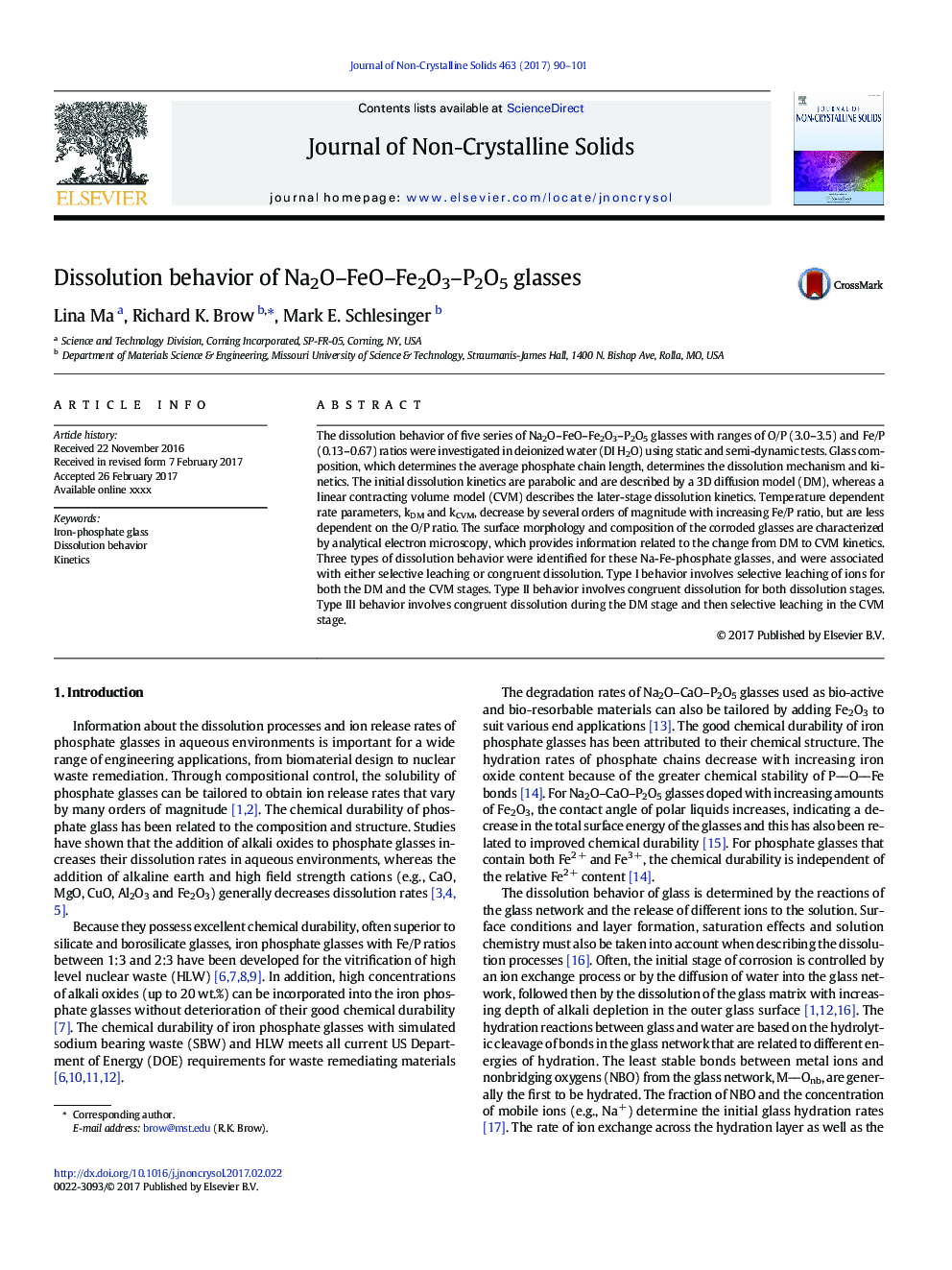| Article ID | Journal | Published Year | Pages | File Type |
|---|---|---|---|---|
| 5441312 | Journal of Non-Crystalline Solids | 2017 | 12 Pages |
Abstract
The dissolution behavior of five series of Na2O-FeO-Fe2O3-P2O5 glasses with ranges of O/P (3.0-3.5) and Fe/P (0.13-0.67) ratios were investigated in deionized water (DI H2O) using static and semi-dynamic tests. Glass composition, which determines the average phosphate chain length, determines the dissolution mechanism and kinetics. The initial dissolution kinetics are parabolic and are described by a 3D diffusion model (DM), whereas a linear contracting volume model (CVM) describes the later-stage dissolution kinetics. Temperature dependent rate parameters, kDM and kCVM, decrease by several orders of magnitude with increasing Fe/P ratio, but are less dependent on the O/P ratio. The surface morphology and composition of the corroded glasses are characterized by analytical electron microscopy, which provides information related to the change from DM to CVM kinetics. Three types of dissolution behavior were identified for these Na-Fe-phosphate glasses, and were associated with either selective leaching or congruent dissolution. Type I behavior involves selective leaching of ions for both the DM and the CVM stages. Type II behavior involves congruent dissolution for both dissolution stages. Type III behavior involves congruent dissolution during the DM stage and then selective leaching in the CVM stage.
Keywords
Related Topics
Physical Sciences and Engineering
Materials Science
Ceramics and Composites
Authors
Lina Ma, Richard K. Brow, Mark E. Schlesinger,
